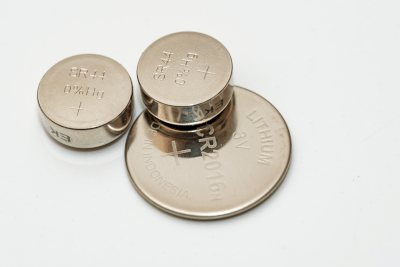What Is a Silver Oxide Battery?

Figure 1: Image of a Silver Oxide Battery
Silver oxide batteries, also known as SR batteries or silver-zinc batteries, utilize silver oxide and zinc as electrodes to deliver high energy density. This makes them ideal for compact, high-capacity applications like button batteries.
Applications of Silver Oxide Batteries
These batteries maintain a stable operating voltage, offering reliable power for precision instruments and medical devices, such as watches, hearing aids, cameras, and electronic thermometers. Their consistent performance is crucial for devices requiring accurate voltage, like quartz clocks and medical equipment.
Principle of Silver Oxide Batteries
Their operation is based on the chemical reactions between the silver(I) oxide positive electrode and zinc negative electrode, using potassium hydroxide or sodium hydroxide as the electrolyte. These reactions enable the generation of electricity with high efficiency and minimal environmental impact, as modern batteries are designed to be mercury-free.
Types of Silver Oxide Batteries
Varieties include small button cells and high-voltage stacked cells, differentiated by electrolyte type (potassium hydroxide as W type, sodium hydroxide as SW type) to suit specific applications. Advances in design have also focused on environmental safety and leakage prevention.
Other Information About Silver Oxide Batteries
1. Advantages
They offer high mechanical strength, low self-discharge rates, and excellent voltage stability, supporting a broad operating temperature range. Their energy density significantly surpasses that of lead-acid and alkaline button batteries.
2. Disadvantages
The primary drawbacks are their higher cost due to silver content, limited recharge cycles, and longer charging times compared to other battery types.